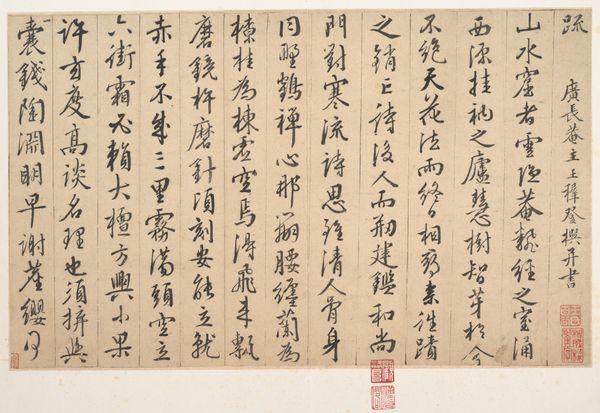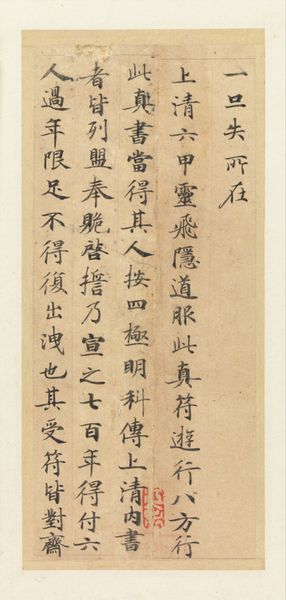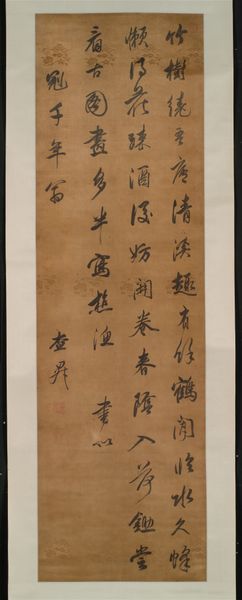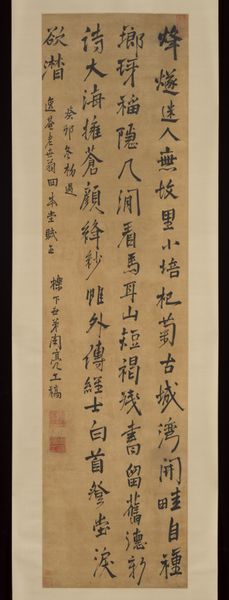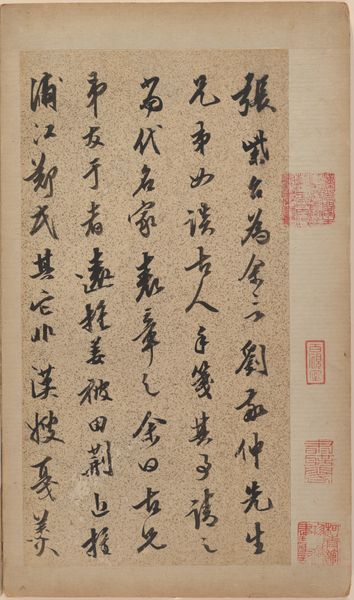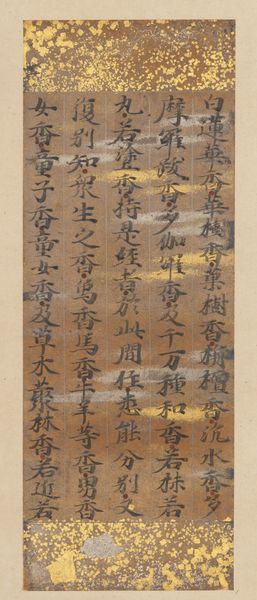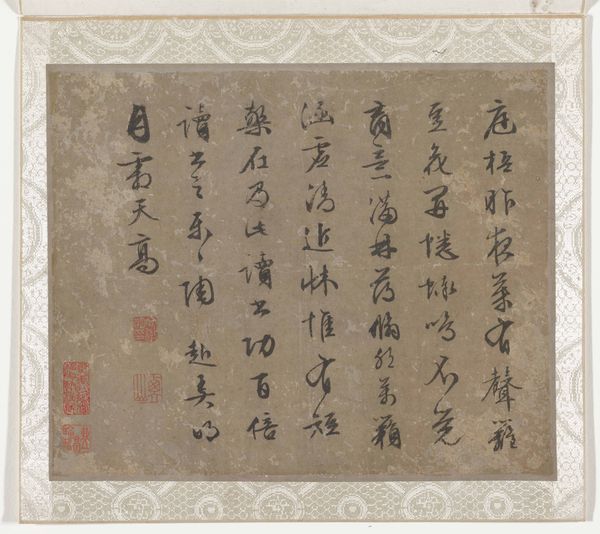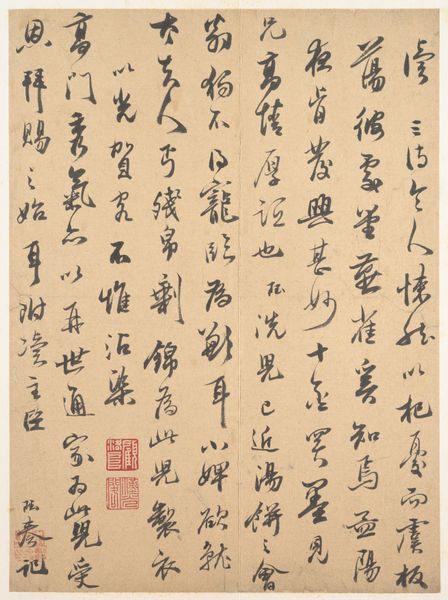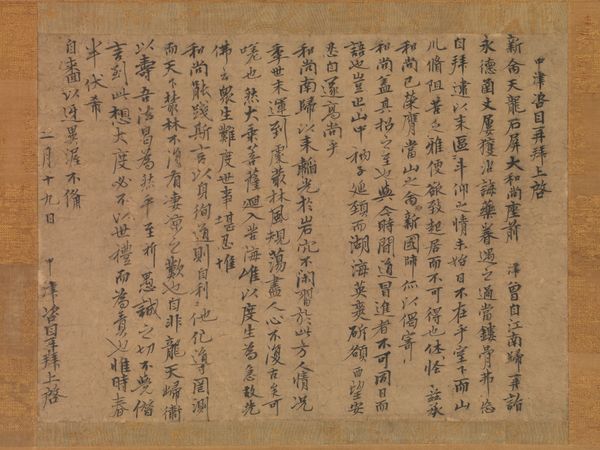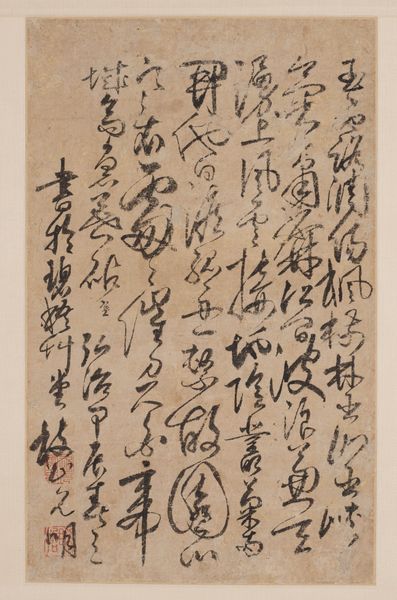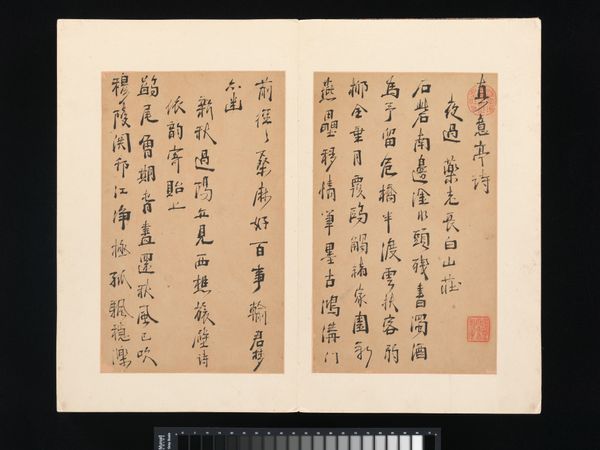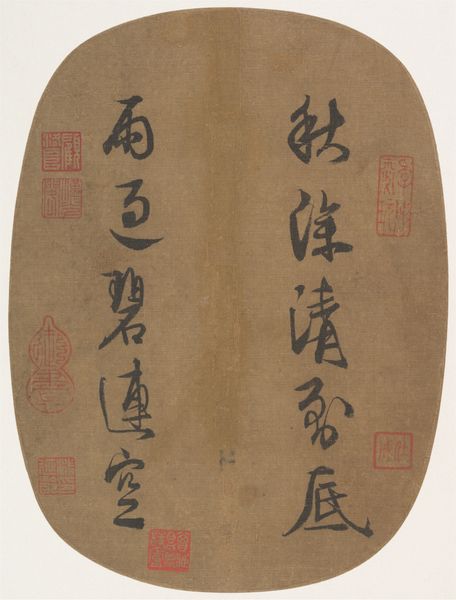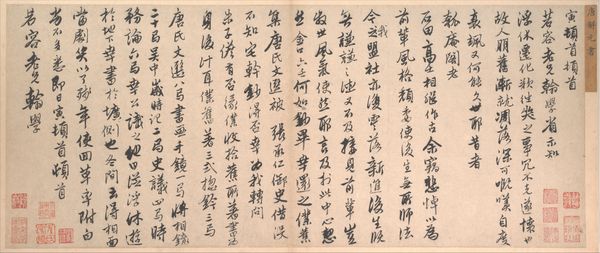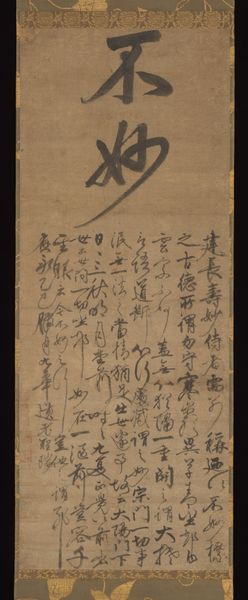
Transcription of Three of Cao Tang’s “Smaller Wandering Immortal Poems” 1686
0:00
0:00
drawing, ink
#
drawing
#
asian-art
#
ink
#
calligraphy
Dimensions: Image: 82 5/8 × 38 3/8 in. (209.9 × 97.5 cm) Overall with mounting: 10 ft. 7 3/8 in. × 47 1/4 in. (323.5 × 120 cm) Overall with knobs: 10 ft. 7 3/8 in. × 51 5/8 in. (323.5 × 131.1 cm)
Copyright: Public Domain
Curator: This ink drawing, dated 1686, is titled "Transcription of Three of Cao Tang’s ‘Smaller Wandering Immortal Poems.’" The artist is Da Chongguang, and it's currently held at the Metropolitan Museum of Art. What strikes you most about it? Editor: The cascading rhythm, definitely. The varying density of the strokes creates a compelling visual melody down the scroll. The composition as a whole seems to dance! Curator: It is, first and foremost, an act of preservation. Cao Tang’s poetry reflects a longing for an escape from the turmoil of late-Ming society, and this work immortalizes those sentiments within a new political order. Editor: Interesting point. If we consider the brushwork, there is deliberate variation—the ink ranges from almost dry to lusciously wet. How would you interpret this contrast from your perspective? Curator: I see that contrast mirroring the socio-political landscape. Chongguang likely grappled with finding stability and tradition in a time of transition, between dynasties, where cultural allegiance became highly charged and even dangerous. His artistry mediates past and present through a careful balancing of different brushstrokes. Editor: Fascinating. Focusing on the text itself—each character embodies a self-contained universe. Yet, together, they produce a narrative. The spacing between them gives as much information as each individual component. Curator: Indeed. It’s interesting to view how calligraphy at the time moved between pure artistry and being a tool to reinforce traditional cultural norms and philosophical continuity amidst shifting power structures. The careful transcription suggests reverence and endorsement. Editor: So, Da Chongguang not only captured the beauty of Cao Tang’s words but also responded to a complex history of artistic integrity, legacy, and innovation? Curator: Precisely! Preserving history with a careful hand, navigating the intricacies of tradition, memory, and transformation. Editor: And I've engaged in an observation that sees beauty within order and variation!
Comments
No comments
Be the first to comment and join the conversation on the ultimate creative platform.
